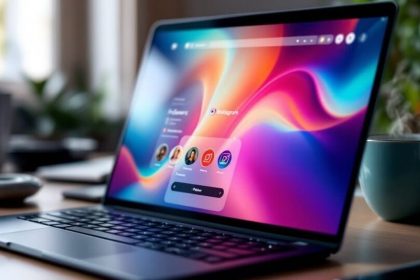The U.S. Department of Energy (DOE) has made a significant stride in bolstering national security by announcing a $10 million initiative. This initiative is designed to enhance the cybersecurity resilience of the nation’s electric grid, a crucial step that reflects the government’s unwavering commitment to safeguarding critical systems against evolving cyber threats.
Amid these developments, professionals like Sudhir Kumar are helping strengthen the cybersecurity foundations of national infrastructure through hands-on technical leadership and innovation. As a Customer Delivery Architect, Kumar led the delivery of a $10 million U.S. Government project focused on secure, resilient networking. His contributions have directly improved service continuity and threat response in large-scale environments—such as optimizing AT&T’s network reliability and streamlining Google’s production network operations. With a focus on performance, automation, and risk mitigation, Kumar has helped advance the security and efficiency of some of the most complex and high-demand networks in the industry.
In this interview, readers will understand how cybersecurity is being reimagined in response to real-world threats. The conversation reveals the practical steps, strategic thinking, and technical innovations behind today’s most critical network defenses, from protecting the national electric grid to building resilient systems for tech giants.
Sudhir, the Department of Energy’s recent initiative underscores the government’s focus on enhancing cybersecurity. Given your experience with similar high-stakes projects, how do you perceive the impact of such investments on national security?
Absolutely—it’s a significant move. Investments like these directly impact national security because they help strengthen the infrastructure supporting essential services—from energy and healthcare to defense and communications.
From my experience supporting a Government Project Deal at Cisco, I’ve seen firsthand how vital it is to build secure, resilient networks that can withstand both cyber threats and operational challenges. These networks aren’t just technical systems but the backbone of national stability and economic continuity.
When the government invests in cybersecurity at this scale, it shifts from reactive to proactive defense. It also creates opportunities for public-private collaboration, where companies can bring their expertise to accelerate innovation and close critical security gaps. Ultimately, these investments help build a safer, more connected future for everyone.
The investment focuses specifically on securing the electric grid. Why do you think the energy sector is a critical cyber defense target?
The energy sector is one of the most high-risk targets for cybersecurity. Even a brief electric grid disruption could have far-reaching consequences, affecting hospitals, transportation, communication systems, and national defense. The urgency of addressing cybersecurity in this field cannot be overstated.
It is incredibly challenging that many of these systems mix old and new technologies. Some parts of the grid are decades old and weren’t designed with cybersecurity in mind. Thus, you have to protect mission-critical infrastructure that is not easily replaceable.
As a Customer Delivery Architect at Cisco, you’ve supported a $10M U.S. Government Project Deal. What were the key technical and strategic challenges, and how did you overcome them?
That project was big, with a lot riding on it. One of the main technical challenges was ensuring that the network could handle highly high-security demands while being flexible and future-proof. We had to design something rock-solid and adaptable, which isn’t always easy.
Strategically, working with multiple government agencies and partners required tight communication. Everyone had their processes and priorities, so aligning them while staying compliant with strict federal standards was a big part of the job.
We tackled it by using a layered security model, adding automation to speed up threat detection, and building redundancy to keep things running smoothly even if something went wrong. Real-time monitoring also played a considerable role.
Staying focused on the bigger mission made it successful. We weren’t just delivering a network but helping protect critical infrastructure. That sense of purpose helped strengthen Cisco’s position as a trusted partner in national security.
You’ve also been responsible for keeping Google’s production network running smoothly—something most people rely on daily. How do you protect systems that millions depend on around the clock?
Managing a production network at this scale means knowing that even a small hiccup can affect millions of people in real time—so I treat reliability as non-negotiable.
I focus on building systems that are resilient from the ground up. That includes real-time monitoring, automated responses, failover setups, and strict access controls to minimize risk. I’m constantly testing “what if” scenarios—running stress tests and simulations to ensure we’re ready for anything.
It also requires strong coordination across teams. I work closely with operations, engineering, and security to align everything. At this level, smooth performance isn’t just about reacting fast—it’s about designing things so they don’t fail in the first place.
You’re credited with inventing the original Unified MPLS architecture, which Cisco and its major partners and clients have since implemented. Can you explain how this innovation came about?
Unified MPLS was born from a real-world need. Networks were getting increasingly complex, especially with the rise of cloud services and mobile traffic. Traditional routing approaches couldn’t keep up efficiently. I realized we needed a framework to simplify operations while making networks faster, more scalable, and easier to manage.
I proposed a unified approach that combined multiple layers of MPLS technologies into a single, streamlined system. It helped operators reduce overhead, accelerate deployment times, and improve reliability. Cisco recognized the potential early on and adopted Unified MPLS in solutions now widely used by major service providers and enterprises.
It allowed Cisco and its partners to offer more efficient, future-ready network solutions, strengthening client trust and opening new business opportunities. Seeing an idea move from whiteboard sketches to global adoption has been one of the most rewarding parts of my career.
Sudhir, you helped develop a technology framework for AT&T that makes networks faster and more reliable. How might everyday users feel about the impact of that kind of work on their daily lives?
That’s a great question; honestly, it’s the part of the work I find most rewarding. Improving how networks handle traffic and recover from issues directly affects how people experience the internet. Faster page loads, fewer dropped video calls, smoother streaming, and fewer service interruptions—the real-world impact.
The framework I helped develop focuses on making data move more efficiently and reliably across large networks. So when someone works from home, attends an online class, or streams a movie, they’re less likely to face lags, buffering, or outages—even when demand is high.
People don’t always think about the infrastructure behind their apps or devices, but when it works well, you feel it. It just feels seamless. And that’s the goal.
Sounds like an incredible setup for innovation. But with networks growing more complex, where do you see the most significant security gaps—and how should companies step up to close them?
As critical systems become more connected, the most significant gaps often come from legacy infrastructure and a lack of real-time visibility. Many of these networks weren’t built with today’s cyber threats in mind, so they’re playing catch-up—especially in sectors like energy, where reliability is everything.
One major issue is that many of these systems still operate in silos. Without centralized monitoring or automation, detecting threats early or responding quickly is hard. That creates a real risk for everything connected.
While brilliant architecture, better data analytics, and proactive defenses are crucial in closing security gaps, the importance of collaboration cannot be overstated. The public and private sectors must work together, sharing standards, maintaining open communication, and committing jointly to securing the infrastructure we all rely on.






